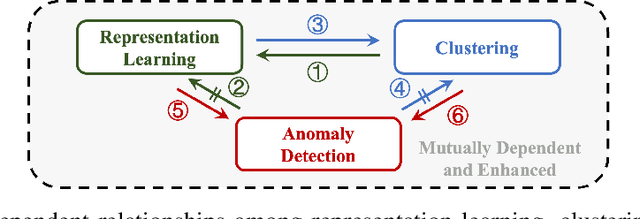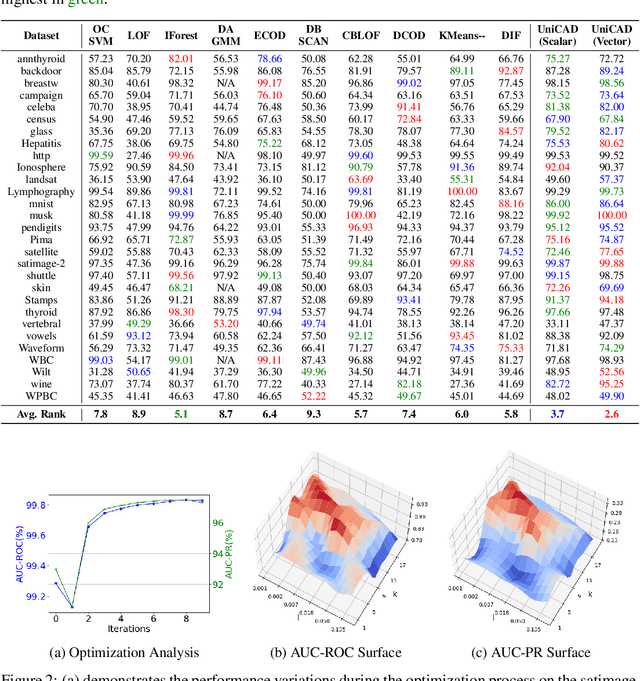Towards a Unified Framework of Clustering-based Anomaly Detection
Paper and Code
Jun 01, 2024



Unsupervised Anomaly Detection (UAD) plays a crucial role in identifying abnormal patterns within data without labeled examples, holding significant practical implications across various domains. Although the individual contributions of representation learning and clustering to anomaly detection are well-established, their interdependencies remain under-explored due to the absence of a unified theoretical framework. Consequently, their collective potential to enhance anomaly detection performance remains largely untapped. To bridge this gap, in this paper, we propose a novel probabilistic mixture model for anomaly detection to establish a theoretical connection among representation learning, clustering, and anomaly detection. By maximizing a novel anomaly-aware data likelihood, representation learning and clustering can effectively reduce the adverse impact of anomalous data and collaboratively benefit anomaly detection. Meanwhile, a theoretically substantiated anomaly score is naturally derived from this framework. Lastly, drawing inspiration from gravitational analysis in physics, we have devised an improved anomaly score that more effectively harnesses the combined power of representation learning and clustering. Extensive experiments, involving 17 baseline methods across 30 diverse datasets, validate the effectiveness and generalization capability of the proposed method, surpassing state-of-the-art methods.
 Add to Chrome
Add to Chrome Add to Firefox
Add to Firefox Add to Edge
Add to Edge